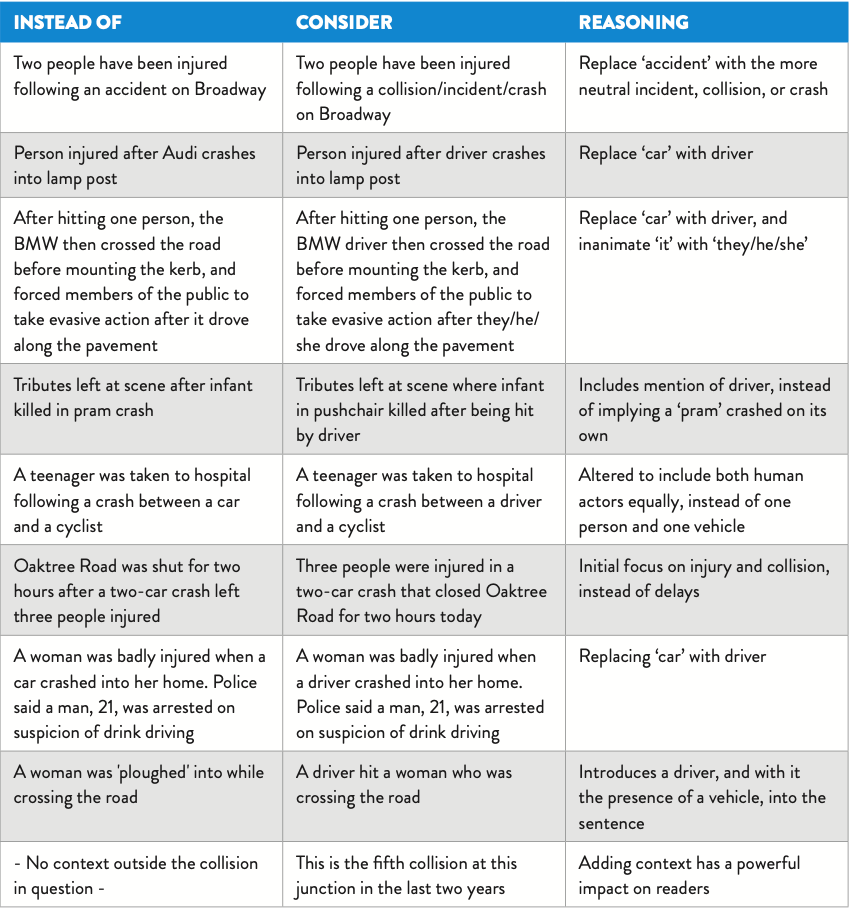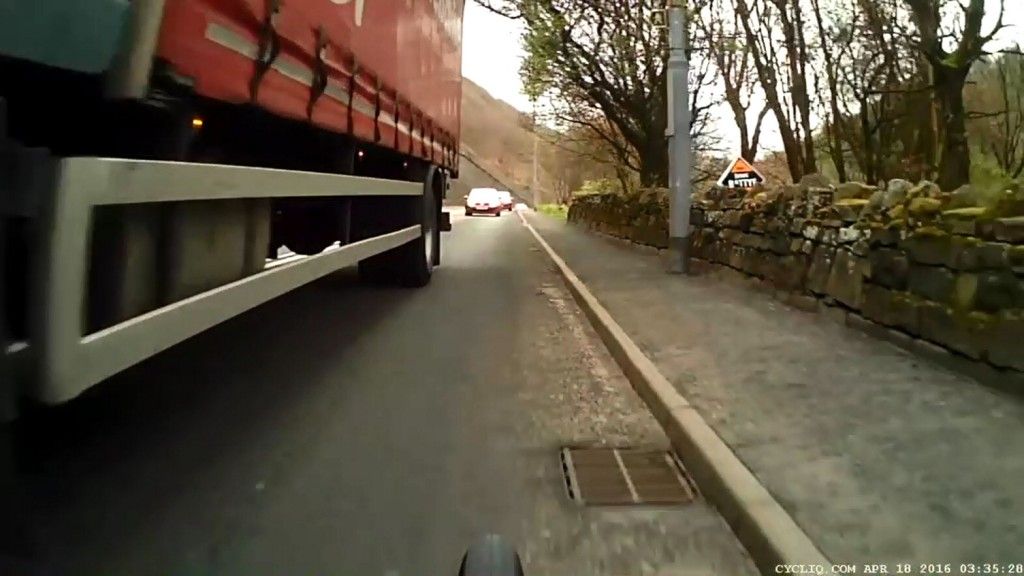Following consultation across a range of media organisations and representatives, the Road Collision Reporting Guidelines, produced in collaboration with the University of Westminster’s Active Travel Academy, have been launched today.
The Guidelines seek to reframe the reporting of road collisions so that they align journalistic principles of accuracy, fairness, non-discrimination and justice. Concern has long been raised that reporting of collisions often makes it sound like the car was automated, with no driver at the wheel to take responsibility. With pedestrians and cyclists the more vulnerable road users, it’s considered important to ensure that drivers are seen to be in charge of the vehicle. In addition, collisions are often reported as ‘accidents’ before any investigation or judgement about the standard of driving can be determined. The new Guidelines seek to address these concerns.
While many journalists already follow good practice, there is always room for improvement.
Laura Laker, Report Author
This could mean describing all human actors in collisions neutrally, such as “driver and pedestrian in collision”, rather than, say, “pedestrian hit by car”, which research shows unintentionally shifts focus to the only named human actor, and implicitly attaches a degree of blame.
It could mean providing crucial context in coverage of road collisions, which research tells us is key in helping us understand wider issues and trends. By including local or national crash statistics, for example, publishers can avoid treating crashes as isolated incidents. Research suggests portraying crashes in that way blocks debate about possible wider causes, such as street design features that tend to put pedestrians at higher risk.
It could also mean avoiding use of the term ‘accident’, which risks making crashes seem inevitable and
unavoidable, or avoiding ‘grouping’ road users by negative characteristics, to protect those road users
from becoming targets of aggression.
The ten point guideline headings are as follows:
- At all times be accurate, say what you know and, importantly, what you don’t know.
- Avoid use of the word ‘accident’ until the facts of a collision are known.
- If you’re talking about a driver, say a driver, not their vehicle.
- Consider the impact on friends and relatives of publishing collision details.
- Treat publication of photos with caution, including user generated footage or imagery.
- Be mindful if reporting on traffic delays not to overshadow the greater harm, of loss of life or serious
injury, which could trivialise road death. - Journalists should consider whether language used negatively generalises a person or their behaviour as part of a ‘group’.
- Coverage of perceived risks on the roads should be based in fact and in context.
- Avoid portraying law-breaking or highway code contravention as acceptable, or perpetrators as victims.
- Road safety professionals can help provide context, expertise, and advice on broader issues around
road safety.
Examples of how these guidelines can be applied are given:
Latest Singletrack Merch
Buying and wearing our sustainable merch is another great way to support Singletrack

For more information about the Guidelines, the consultation process and its supporters, head to this website.
For more reading on this sort of thing, check out the works of Bez.
Your comments
[bbp-single-topic id=11887474]





